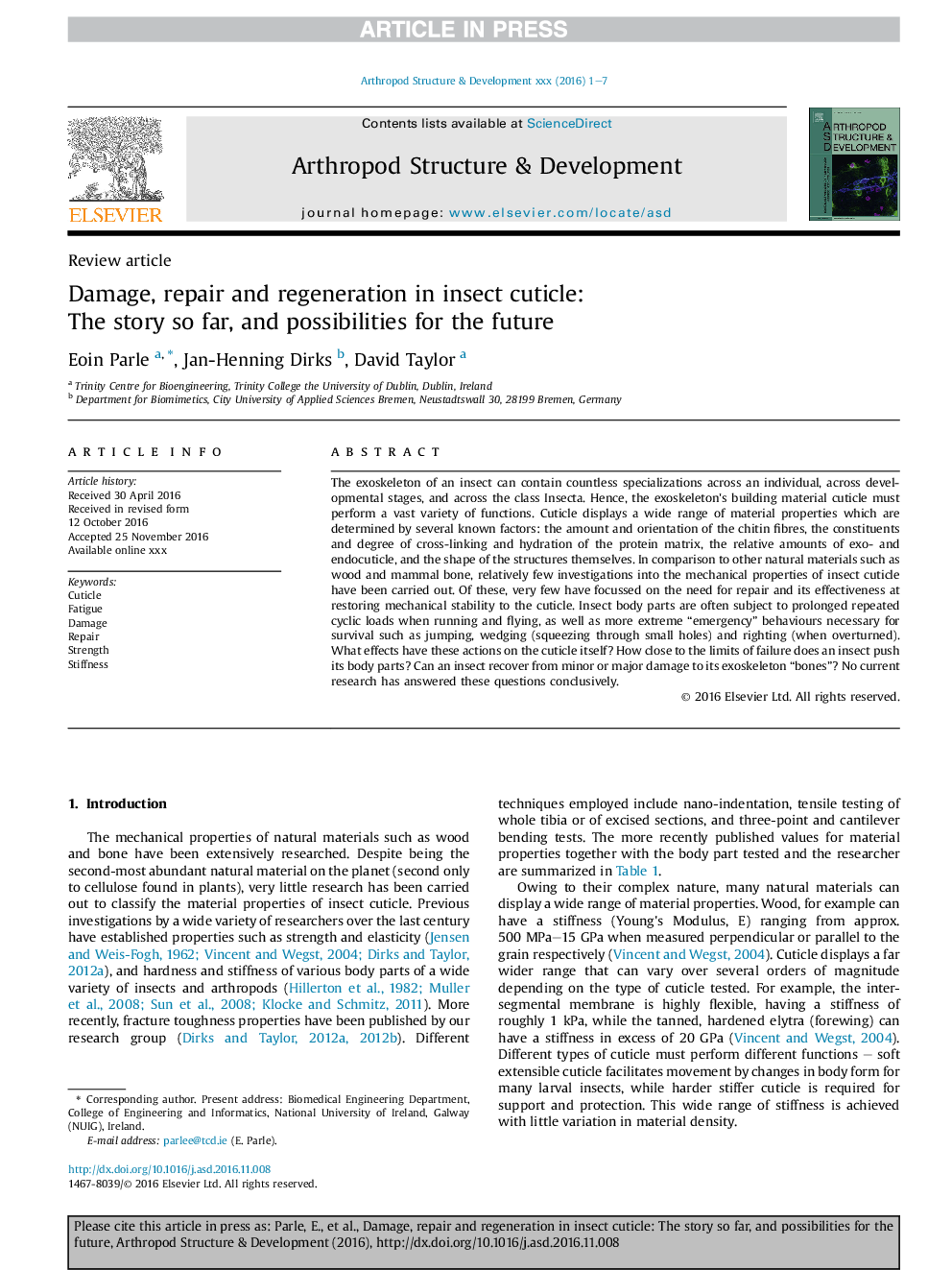| Article ID | Journal | Published Year | Pages | File Type |
|---|---|---|---|---|
| 5585071 | Arthropod Structure & Development | 2017 | 7 Pages |
Abstract
The exoskeleton of an insect can contain countless specializations across an individual, across developmental stages, and across the class Insecta. Hence, the exoskeleton's building material cuticle must perform a vast variety of functions. Cuticle displays a wide range of material properties which are determined by several known factors: the amount and orientation of the chitin fibres, the constituents and degree of cross-linking and hydration of the protein matrix, the relative amounts of exo- and endocuticle, and the shape of the structures themselves. In comparison to other natural materials such as wood and mammal bone, relatively few investigations into the mechanical properties of insect cuticle have been carried out. Of these, very few have focussed on the need for repair and its effectiveness at restoring mechanical stability to the cuticle. Insect body parts are often subject to prolonged repeated cyclic loads when running and flying, as well as more extreme “emergency” behaviours necessary for survival such as jumping, wedging (squeezing through small holes) and righting (when overturned). What effects have these actions on the cuticle itself? How close to the limits of failure does an insect push its body parts? Can an insect recover from minor or major damage to its exoskeleton “bones”? No current research has answered these questions conclusively.
Related Topics
Life Sciences
Agricultural and Biological Sciences
Insect Science
Authors
Eoin Parle, Jan-Henning Dirks, David Taylor,
